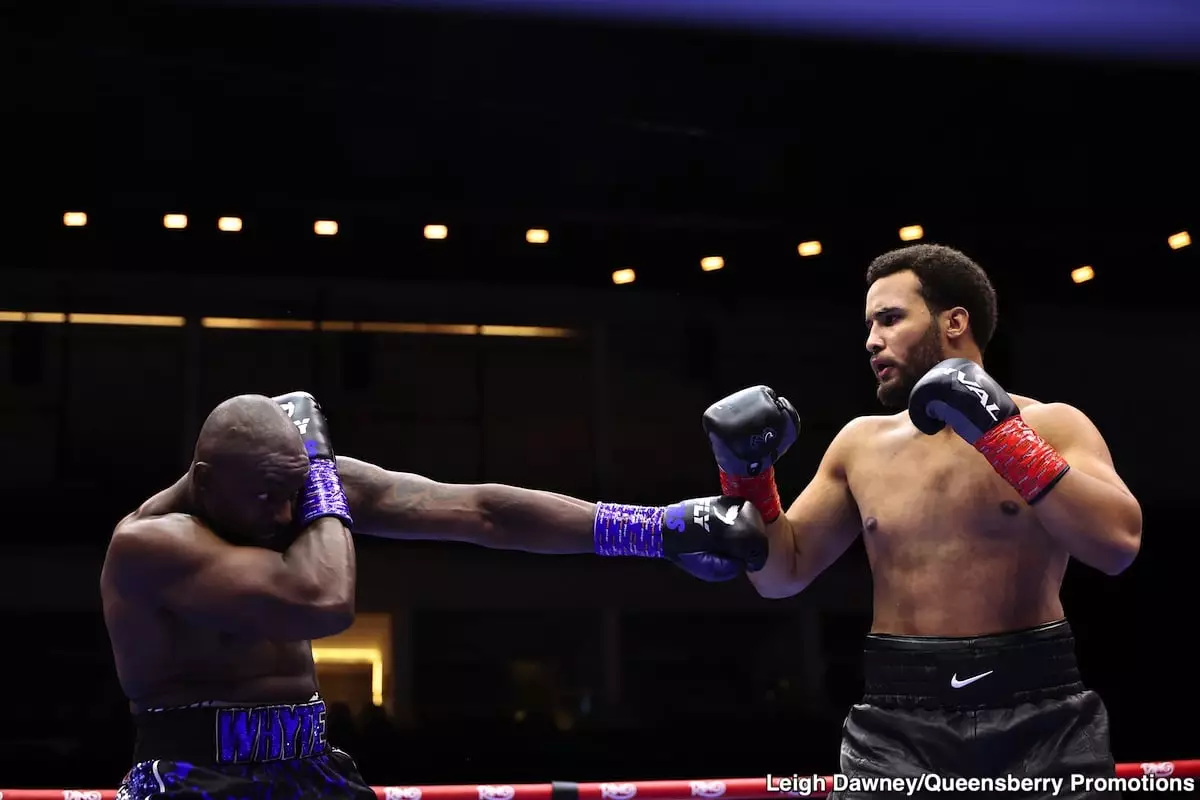Luis Ortiz’s recent return to the ring is a testament to the enduring spirit of seasoned fighters in boxing. At 46 years old, many would assume Ortiz’s best days are behind him. Yet, his swift victory and renewed confidence challenge that notion. This veteran southpaw’s performance underscores a critical truth in boxing: experience and resilience can often trump raw youth — provided the fighter maintains his physical condition and mental sharpness. Ortiz’s ability to still engage in a proactive, aggressive manner is a reflection of diligent training and unwavering passion. Such performances push back against the ageist stereotypes that often diminish older fighters, urging fans and analysts alike to reconsider the true limits of longevity in combat sports.
The Confidence of a Fighter Still Hungry for Legacy
Post-fight, Ortiz displayed remarkable self-assurance, proclaiming that he is “ready for anybody.” This declaration, while perhaps fueled by adrenaline, reveals an important aspect of boxing psychology: the unwavering desire to remain relevant and ambitious, regardless of age. Fighters like Ortiz, who have experienced the highs of title challenges, often carry the burning wish to leave a lasting legacy by stepping into big fights. His mention of renowned heavyweights such as Oleksandr Usyk and Anthony Joshua serves as a provocative reminder of the industry’s fascination with name recognition. Yet, these fights remain distant dreams — complex negotiations and heavyweight politics often place such matchups out of reach for an aging contender. Nonetheless, Ortiz’s confidence invigorates discussions about the potential for seasoned fighters to still make significant impacts, not just as gatekeepers but as genuine competitors.
The Underappreciated Potential of a Young Gun: Moses Itauma
What truly makes Ortiz’s statement intriguing is his willingness to consider a fight with younger prospects like Moses Itauma. The 20-year-old rising star presents an interesting opportunity for both fighters: Ortiz can test his durability and skills against someone still in the early stages of their career, while Itauma can add a notable scalp to his record. Despite the age gap — Ortiz being old enough to be Itauma’s grandfather — the strategic value of such a matchup cannot be understated. For Ortiz, fighting Itauma might be a way to stay active and relevant, and for Itauma, securing a bout against a former world title challenger offers invaluable experience and exposure. This scenario highlights a broader shift in boxing: the importance of legacy-building through strategic matchups, even if they seem unconventional or carry risks for the younger fighter.
The Broader Impact and Industry Dynamics
While Ortiz’s ambitions are admirable, the reality of boxing’s infrastructure complicates these dream matchups. Title opportunities involving Usyk or Joshua are highly unlikely at this stage, given the fighters’ own trajectories and promotional alignments. Yet, fights with prospects like Itauma are more feasible, especially if both parties prioritize development over immediate titles. The potential for Ortiz to serve as a stepping stone or a test for young prospects resonates with a core concept in boxing: the mentor-like role older fighters can embody. Such contests are often viewed skeptically by purists, but they carry immense entertainment and developmental value. If Ortiz can negotiate a fair deal and obtain the necessary licensing, his participation could energize the heavyweight scene, bridging generations and rekindling interest in battles that matter.
The Reality of Age, Speed, and Power in the Modern Heavyweight Division
One concern that lingers in discussions about Ortiz’s future fights revolves around mobility and punch resistance. The heavyweight division today is driven by explosive athleticism and high punch outputs, often favoring youth. Ortiz’s slower footwork and boxing style may pose challenges against faster, more agile opponents. Yet, his ring intelligence, durability, and experience can compensate for some of these gaps. The hypothetical matchup with Itauma — a young, promising southpaw — tests this balance: can an aged but craftily fought veteran hold up against a fresher, more dynamic opponent? The proof will be in how Ortiz adapts and whether he can land one of his signature bombs, which could still turn the tide in any bout. These considerations make Ortiz’s return more than nostalgia; they are a real exercise in boxing strategy, resilience, and seizing the twilight years of a career with purpose.
In the end, Luis Ortiz’s comeback signifies more than a single fight — it embodies the relentless pursuit of significance at any age. His openness to testing young talent, especially someone like Itauma, invites a fresh chapter in heavyweight boxing. Whether or not these dreams materialize, Ortiz’s boldness challenges both fighters and fans to rethink the boundaries of age, legacy, and the sweet science itself.

